By Dan Weisz
This series of pictures was from a drive through the Santa Cruz Flats last week. Now that winter is upon us, Western Meadowlarks are much more common in open deserts, grasslands, farmland and pastures of southern Arizona. These birds always dress appropriately for the season with their tweed jackets and fashionable V-neck sweaters underneath.
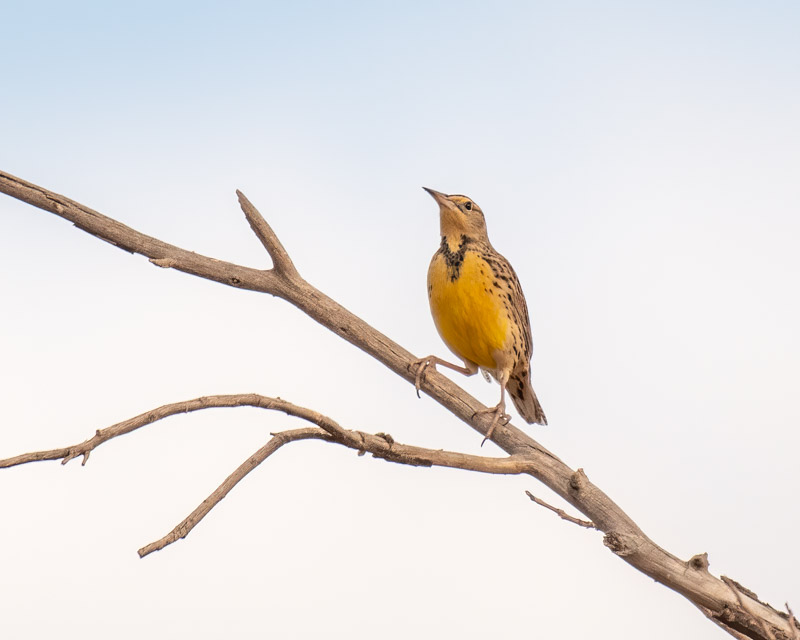
A common wintering sparrow is the Vesper Sparrow. Its thin white eye-ring and the small chestnut shoulder patch help to ID this little brown bird. Its name came in the mid-1800’s from its song, often heard at twilight. This was the same time that evening “Vesper” prayers were held and so the nickname stuck.
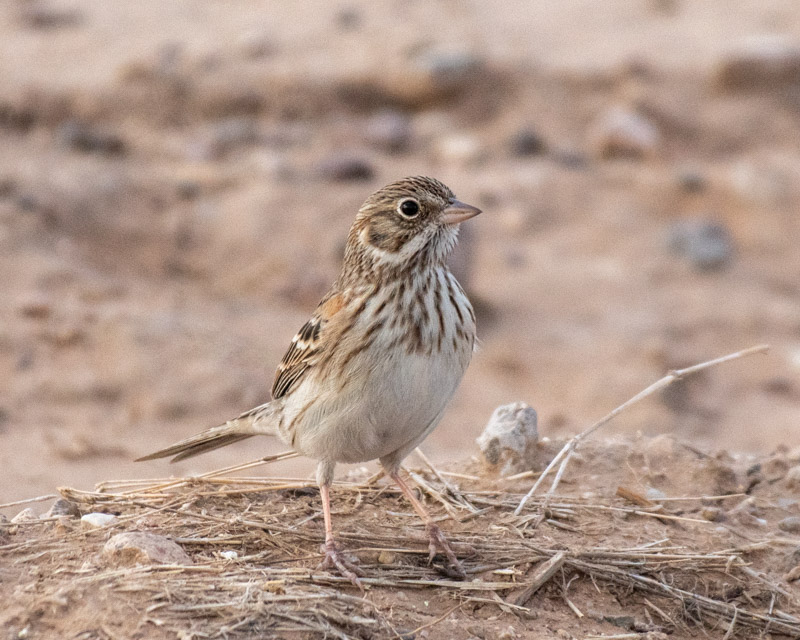
Another common wintering sparrow in the desert is the Savannah Sparrow. This one was very secretive. That yellow spot in front of its eye is distinctive. This bird can be found in grassy areas (and in the deserts, grassy does not imply green grass- dry winter grasses are what is all around). Savannah Sparrows did not get their name from being found in savannas but because they were first identified by an ornithologist in Savannah, Georgia.
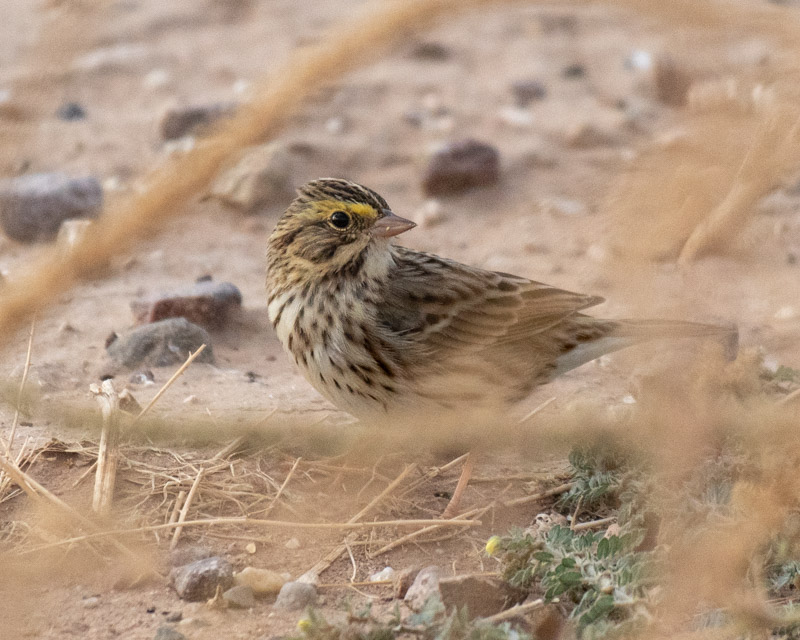
And did I say there were Western Meadowlarks around? On this particular morning I saw them practically everywhere. This species is a chunky looking bird with a flat head and a long, slender bill. To me, its tail seems to be too short for its body.
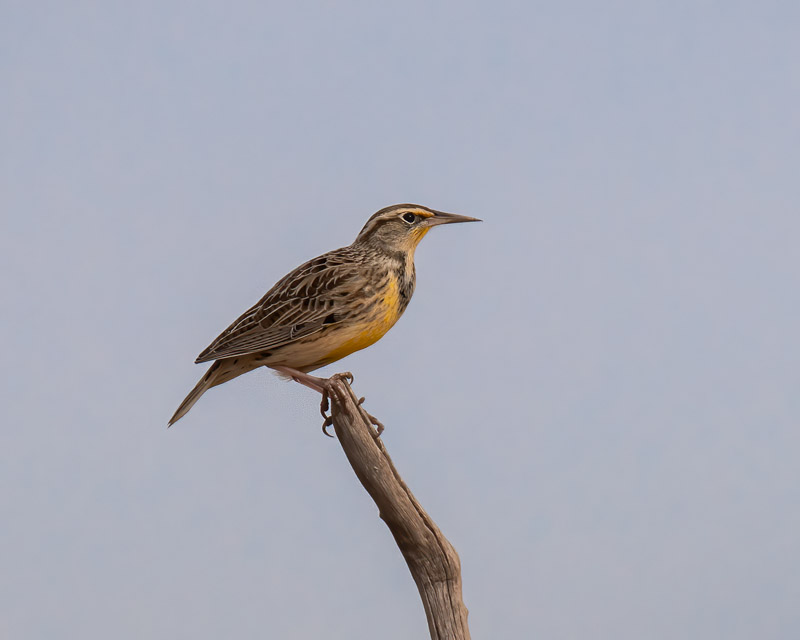
While most sparrows are fairly plain brown birds, the Lark Sparrow’s facial pattern makes it a flashy star among sparrows. We have them year-round in southern Arizona but the winter brings in birds from higher elevations as well as migrants from their northern range.
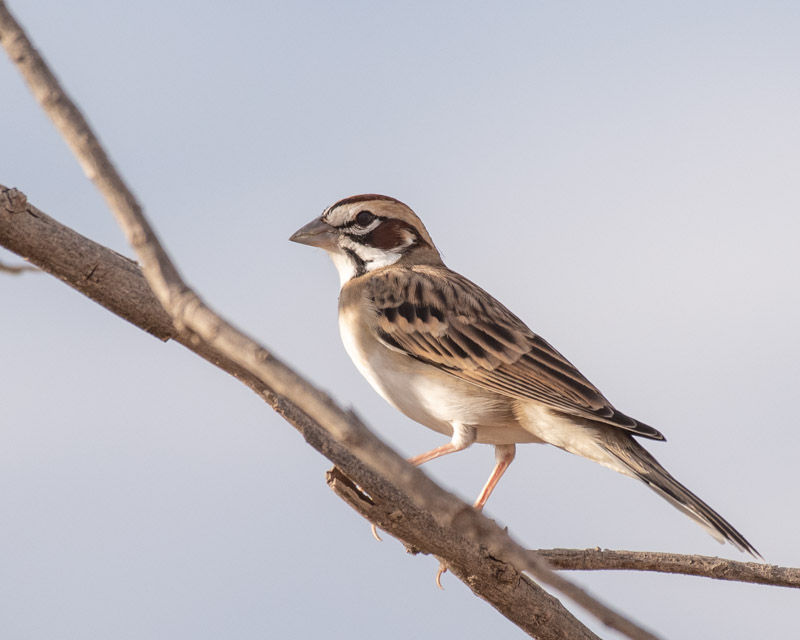
Another fairly common wintering bird is the Lark Bunting. These are large sparrows with a thick, bluish/gray bill. During breeding season the males are mostly black with a large white patch in their wings. Now, during non-breeding season the males are dark brown and streaky but the “white” wing patch is still visible.
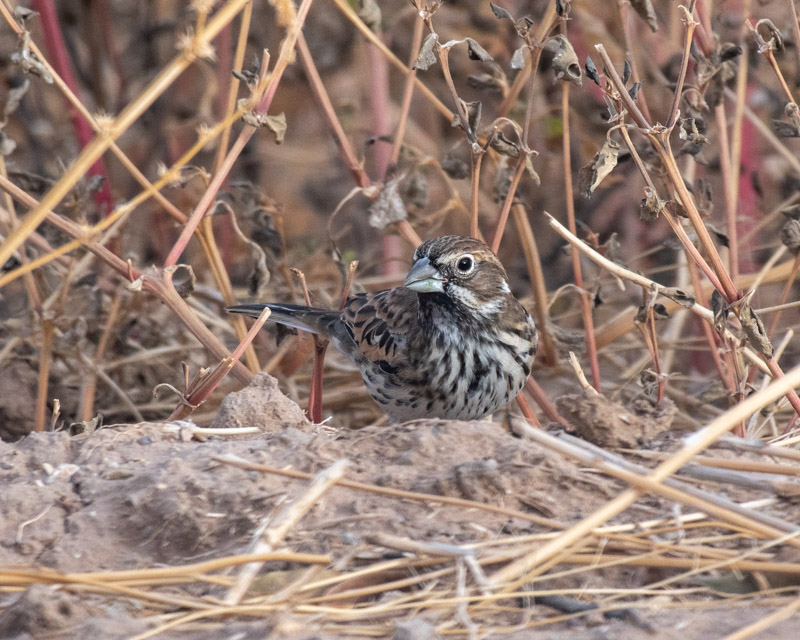
From this view of the Lark Bunting’s side, you can see the light wing patch.
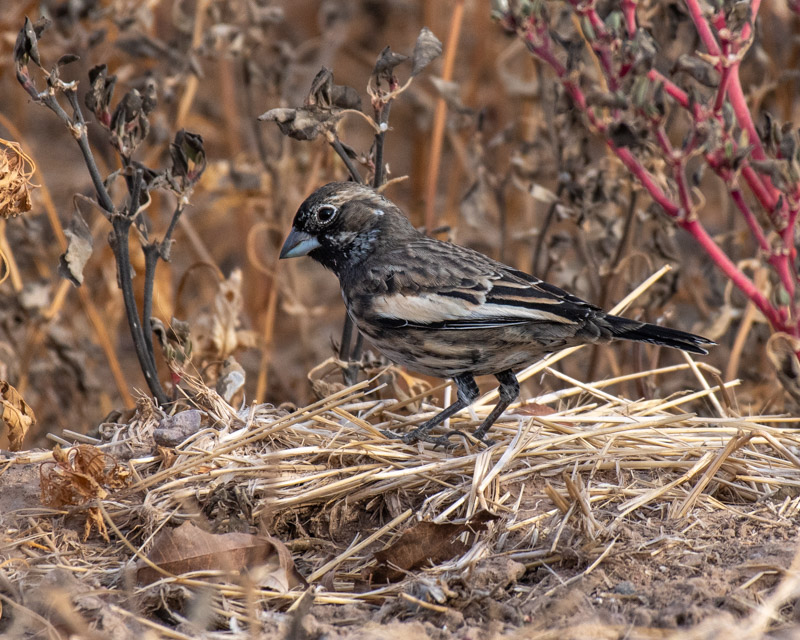
Loggerhead Shrikes are in southern Arizona year-round but are fairly uncommon throughout the summer. In the winter they are much more common and found in grasslands, fields, and open desert. Although they are songbirds, they are fierce predators who act more like raptors. They will prey on insects, lizards, birds and even small mammals. Loggerhead Shrikes are known for skewering their kill on thorns or barbed wire for easy eating. Their black masks are appropriate for their lifestyles.

I left the agricultural areas of the Santa Cruz Flats and took a small detour through Marana. The most interesting thing I saw was a group of Common Ravens “kiting” over a large Pecan tree. The Ravens were facing the wind and floating right above the tree just like a kite riding the wind. I wasn’t sure what they were doing- were they just playing in the wind or what?
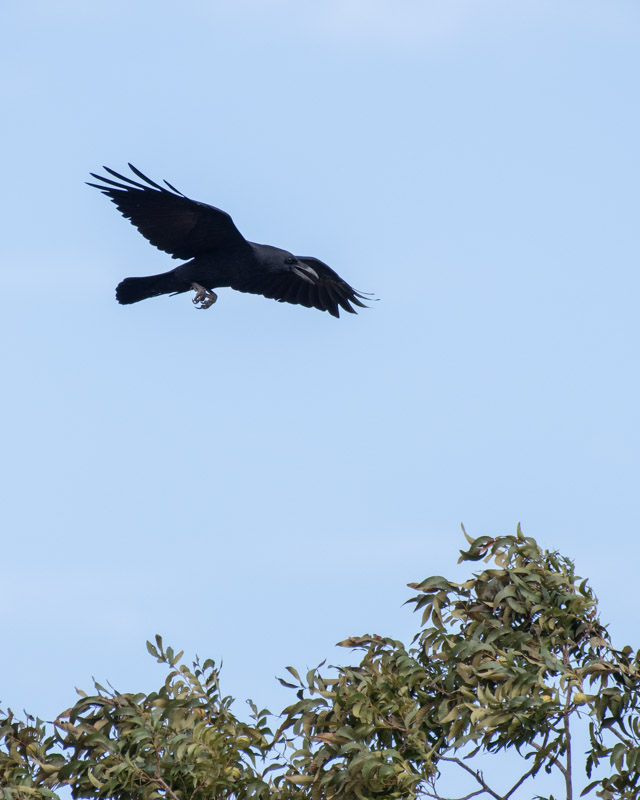
Suddenly one Common Raven lifted its wings and dropped down towards the tree.
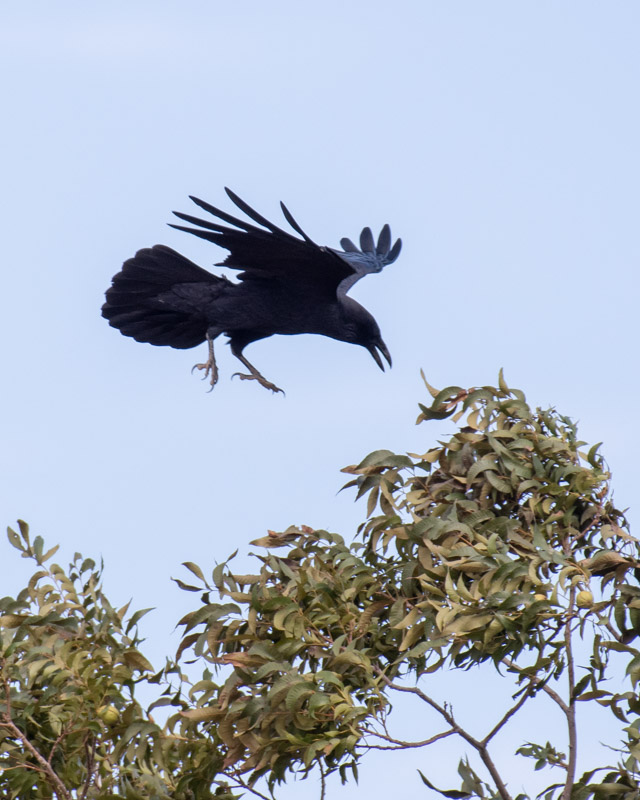
And while in the air, it plucked a pecan right off the tree. You can see the other pecans in the tree as the Raven flies off with its prize.
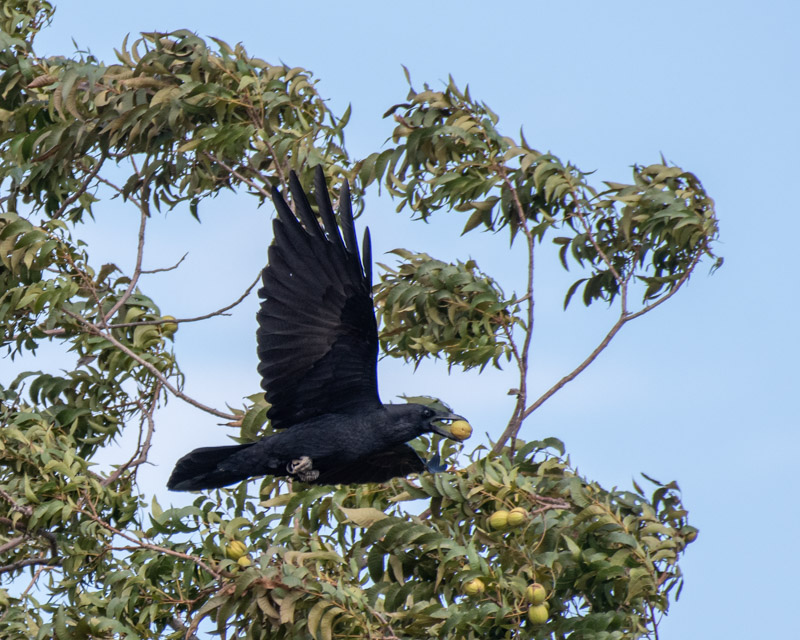
The Raven flew off towards a nearby field where it landed among a few other Ravens. I’m sure it would be spending the next bit of time cracking that pecan open for the nutty treat inside.
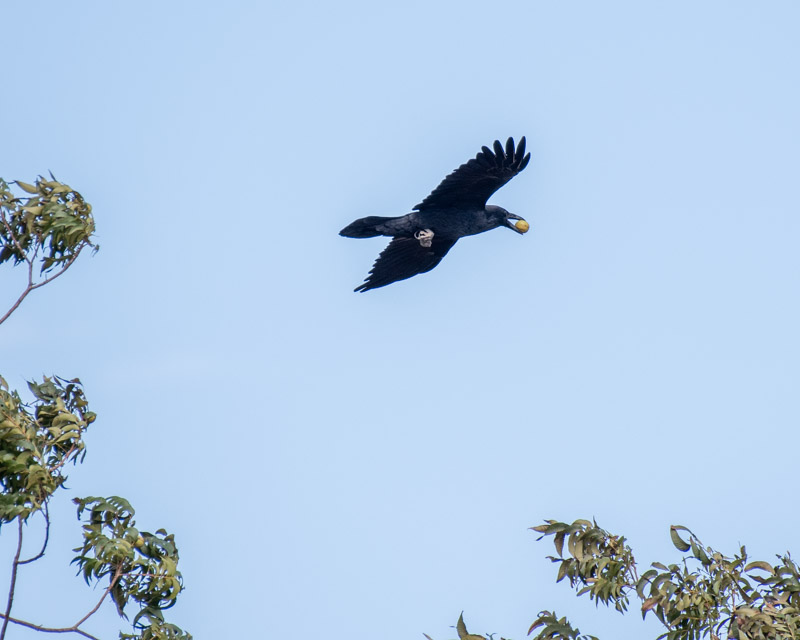
I left the ravens, driving down the road towards the freeway entrance and, of course, passed another Meadowlark on my way.
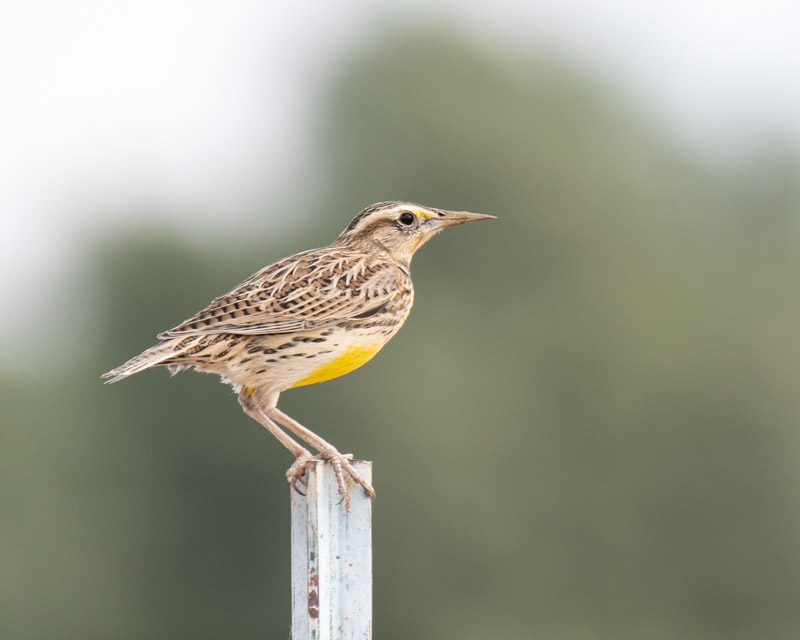
It was a good day. I also saw quite a few different kinds of raptors which I will share in the next posting.
